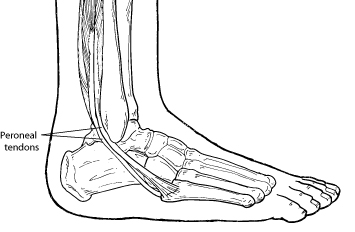What Are The Peroneal Tendons?
There are two peroneal tendons in the foot, both running side-by-side behind the outer ankle bone. One attachesto the outer part of the midfoot, while the other runs under the foot and attaches near the inside of the arch. Their function is to stabilized the foot and protect them from sprains.
Causes and Kinds of Peroneal Injuries
This kind of injury can be acute (sudden occurrence) or chronic (developing over a period of time). Usually, they are acquired by people who participate in sports with repetitive ankle motions. People with high arches are also prone to developing injuries in the peroneal tendons.
- Tendonitis is the inflammation of one or both tendons. It's caused by repetitive use of the tendon, overuse, or trauma. Symptoms include pain, swelling, and warmth to the touch.
- Acute tears are caused by repetitive activity or trauma. Symptoms include pain, swelling, and weakness or instability of the foot.
- Degenerative tears (tendonosis) are typically due to overuse and occur over a long period of time. Symptoms include sporadic pain on the outside of the ankle, weakness or instability of the ankle, or an increase in height of the arch of the foot.
- Subluxation is when one or both of the tendons have slipped out of their natural positions. This can occur as a congenital abnormality, or due to trauma. Symptoms include a snapping feeling of the tendon around the ankle bone, sporadic pain behind the outside ankle bone, or ankle instability or weakness.
Diagnosis
Your podiatrist will examine your foot, looking for pain, instability, swelling, warmth, and weakness on the outer side of the ankle. MRI's or ultrasound imaging may be needed to aid in the diagnosis as well.

